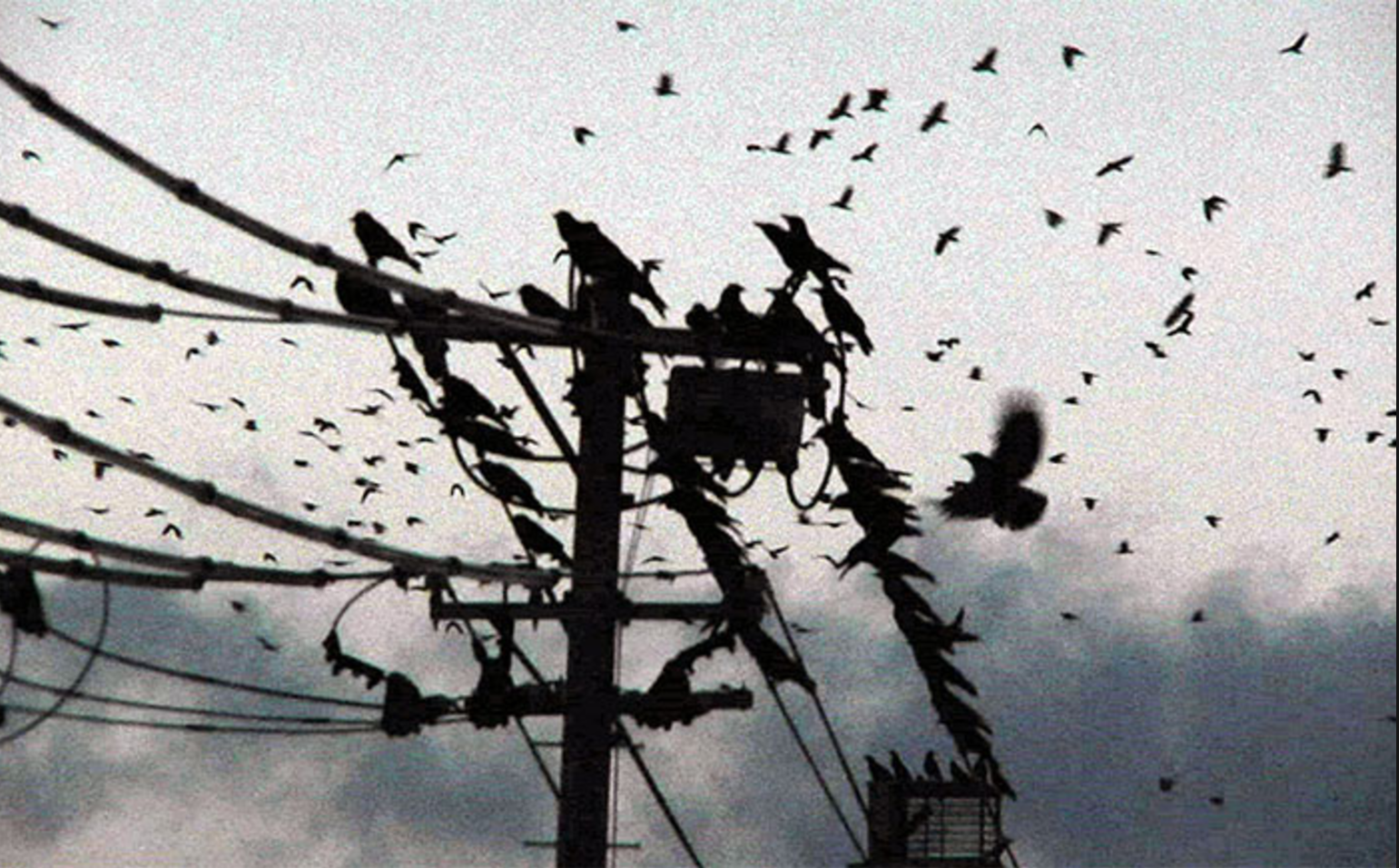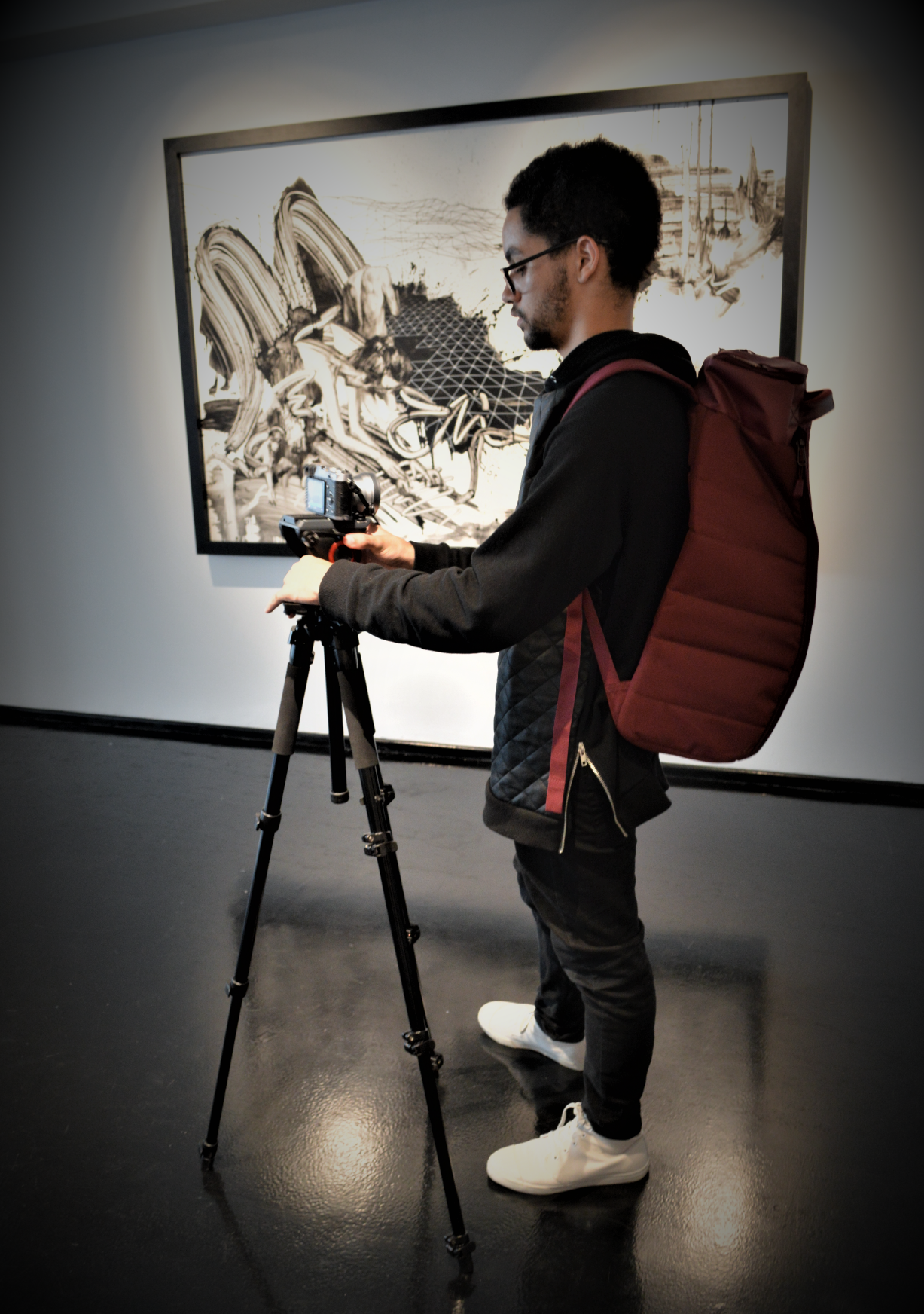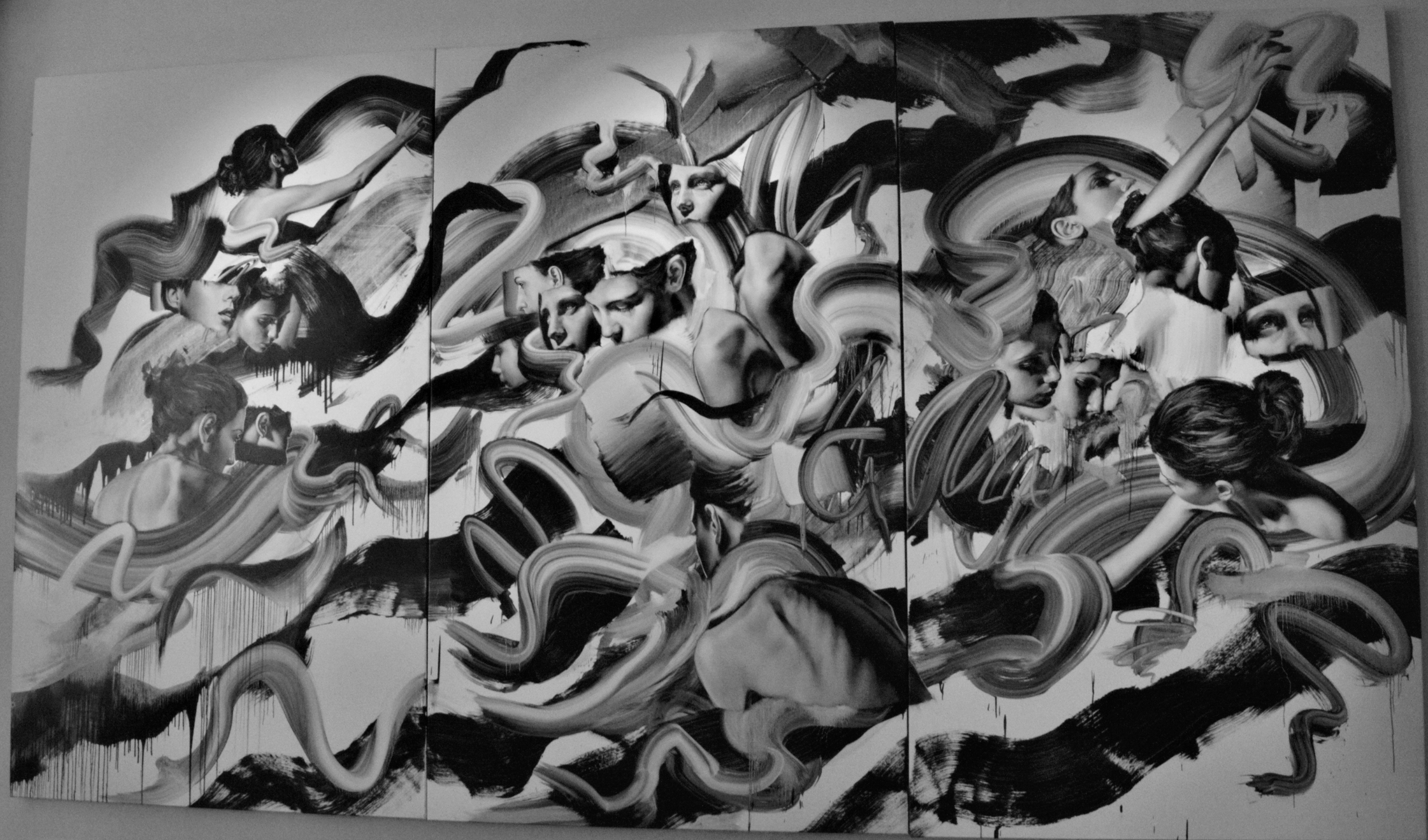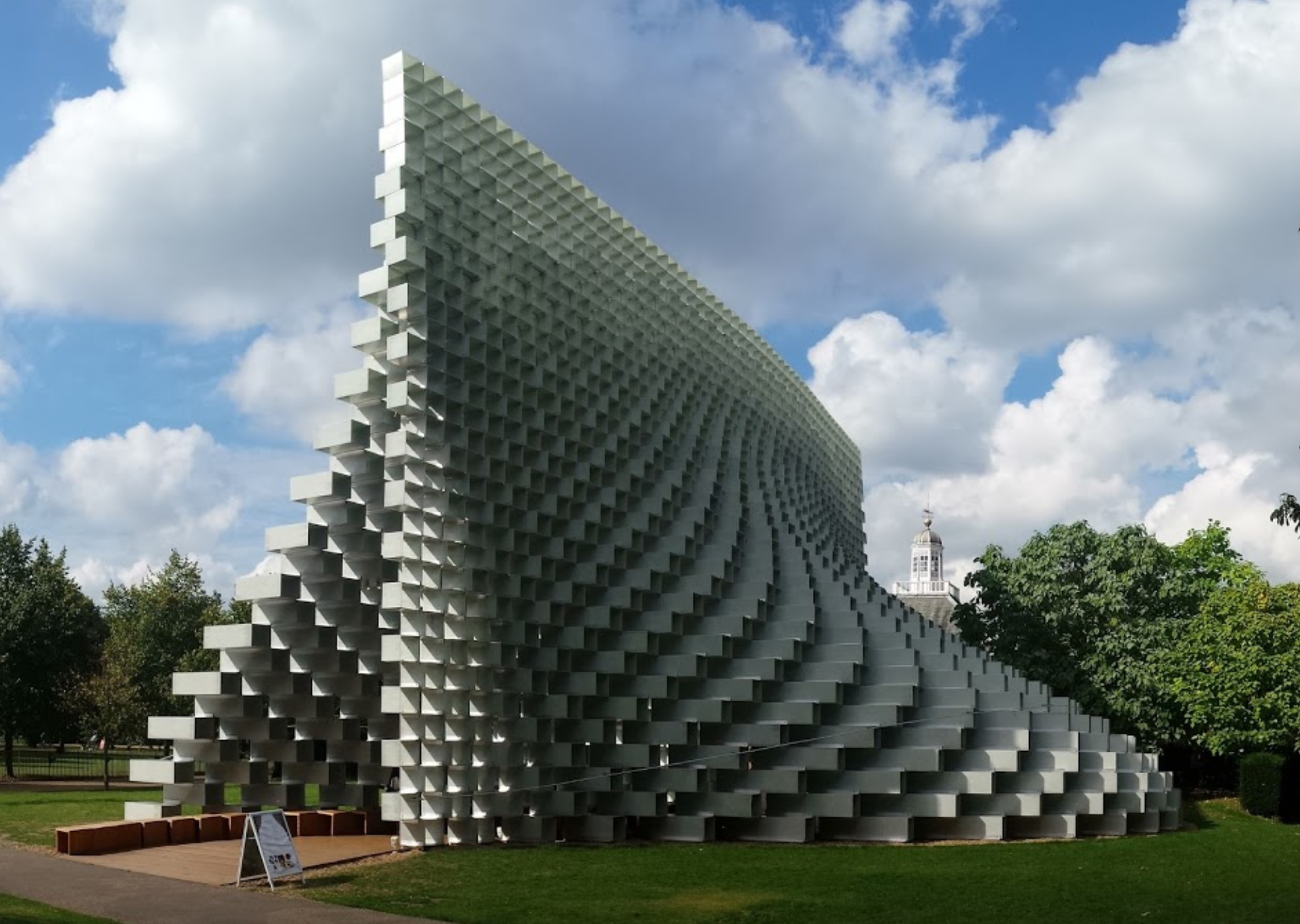Difference between revisions of "Modern Galleries in London: a Documentary"
From Londonhua WIKI
| Line 226: | Line 226: | ||
<br> | <br> | ||
In this section, provide a summary or recap of your work, as well as potential areas of further inquiry (for yourself, future students, or other researchers). | In this section, provide a summary or recap of your work, as well as potential areas of further inquiry (for yourself, future students, or other researchers). | ||
| − | |||
| − | |||
| − | |||
<br><br> | <br><br> | ||
=Attribution of Work= | =Attribution of Work= | ||
| Line 244: | Line 241: | ||
If appropriate, add an image gallery | If appropriate, add an image gallery | ||
<br><br> | <br><br> | ||
| − | + | =References= | |
[[Category:Art Projects]] | [[Category:Art Projects]] | ||
[[Category:2017]] | [[Category:2017]] | ||
Revision as of 10:59, 2 June 2017
Galleries in London
by Sofia Reyes and Jacob Dupuis
|
Documentary |
Contents
Abstract
Introduction
I suggest you save this section for last. Describe the essence of this project. Cover what the project is and who cares in the first two sentences. Then cover what others have done like it, how your project is different. Discuss the extent to which your strategy for completing this project was new to you, or an extension of previous HUA experiences.
Section 1: Background
History of Documentary
Since the early 1900s, filmmakers have been capturing and telling the stories of real people, places, and events along side fictional ones. The desire to learn or experience something new through film was growing. In 1926, John Grierson, a Scottish filmmaker and expert, created the term Documentary, when reviewing the film Moana, by American filmmaker Robert Flaherty.[1] John Grierson was inspired by the works of Flaherty, and went on to create his own films in Scotland and Britain. He inevitably became in charge of the British Empire Marketing Board where he would oversee production of thousands of films produced in the United Kingdom. In 1929 he developed his own film Drifters, which would then be credited as the first British documentary, introducing the storytelling medium to the English.[2]
While documentary film is a popular informative method of filmmaking, often the difficulty and work put in to create these films is overlooked by the audience. With the rise of smaller, high quality cameras, and better editing capabilities, documentary is becoming even more widespread than ever and still is a popular field for award-winning productions to develop.
Types of Documentary
Every documentary has its own distinct voice. Like every speaking voice, every cinematic voice has a style or “grain” all its own that acts like a signature or fingerprint. It attests to the individuality of the filmmaker or director or, sometimes, to the determining power of a sponsor or controlling organization. Individual voices lend themselves to an auteur theory of cinema, while
shared voices lend themselves to a genre theory of cinema. Genre study
considers the qualities that characterize various groupings of filmmakers
and films. In documentary film and video, we can identify six modes of representation
that function something like sub-genres of the documentary
film genre itself: poetic, expository, participatory, observational, reflexive,
performative.
These six modes establish a loose framework of affiliation within which
individuals may work; they set up conventions that a given film may adopt;
and they provide specific expectations viewers anticipate having fulfilled.
Each mode possesses examples that we can identify as prototypes or mod-
99
Nichols, Intro to Documentary 8/9/01 10:19 AM Page 99
els: they seem to give exemplary expression to the most distinctive qualities
of that mode.They cannot be copied, but they can be emulated as other
filmmakers, in other voices, set out to represent aspects of the historical
world from their own distinct perspectives.[3]
To some extent, each mode of documentary representation arises in
part through a growing sense of dissatisfaction among filmmakers with a
previous mode. In this sense the modes do convey some sense of a documentary
history.The observational mode of representation arose, in part,
from the availability of mobile 16mm cameras and magnetic tape recorders
in the 1960s. Poetic documentary suddenly seemed too abstract and expository
documentary too didactic when it now proved possible to film everyday
events with minimal staging or intervention.
Poetic Documentary
'Subjective and Arttistic Expression'
Poetic Mode: emphasizes visual associations, tonal or rhythmic qualities,descriptive passages, and formal organization. This mode bears a close proximity to experimental, personal, or avant-garde filmmaking.
Poetic documentary can be compared with the Modernist Avant-garde. This type of documentary sacrifices the conventions of continuity editing and the sense of a very specific location in time and place that follows from it to explore associations and patterns that involve temporal rhythms and spatial juxtapositions. Social actors seldom take on the full-blooded form of characters with psychological complexity and a fixed view of the world. People more typically function on a par with other objects as raw material that filmmakers select and arrange into associations and patterns of their choosing.
 |
The poetic mode is particularly adept at opening up the possibility of alternative forms of knowledge to the straightforward transfer of information, the prosecution of a particular argument or point of view, or the presentation of reasoned propositions about problems in need of solution.This mode stresses mood, tone, and affect much more than displays of knowledge or acts of persuasion. The rhetorical element remains underdeveloped.
Laszlo Moholy-Nagy’s Play of Light: Black, White, Grey (1930), for example, presents various views of one of his own kinetic sculptures to emphasize
the gradations of light passing across the film frame rather than to document the material shape of the sculpture itself. The effect of this play
of light on the viewer takes on more importance than the object it refers to in the historical world. Similarly, Jean Mitry’s Pacific 231 (1944) is in part a
homage to Abel Gance’s La Roue and in part a poetic evocation of the power and speed of a steam locomotive as it gradually builds up speed and hurtles
toward its (unspecified) destination.
The editing stresses rhythm and form more than it details the actual workings of a locomotive. The documentary dimension to the poetic mode of representation stems largely from the degree to which modernist films rely on the historical world for their source material. Some avant-garde films such as Oscar Fischinger’s Composition in Blue (1935) use abstract patterns of form or color or animated figures and have minimal relation to a documentary tradition of representing the historical world rather than a world of the artist’s
imagining. Poetic documentaries, though, draw on the historical world for their raw material but transform this material in distinctive ways. Francis
Thompson’s N.Y., N.Y. (1957), for example, uses shots of New York City that provide evidence of how New York looked in the mid-1950s but gives
greater priority to how these shots can be selected and arranged to produce a poetic impression of the city as a mass of volume, color, and movement.Thompson’s
film continues the tradition of the city symphony film and affirms the poetic potential of documentary to see the historical world anew.
Origin
The poetic mode began in tandem with modernism as a way of representing reality in terms of a series of fragments, subjective impressions, incoherent
acts, and loose associations.These qualities were often attributed to the transformations of industrialization generally and the effects of World
War I in particular. The modernist event no longer seemed to make sense in traditional narrative, realist terms. Breaking up time and space into multiple
perspectives, denying coherence to personalities vulnerable to eruptions from the unconscious, and refusing to provide solutions to insurmountable
problems had the sense of an honesty about it even as it created works of art that were puzzling or ambiguous in their effect. Although some
films explored more classical conceptions of the poetic as a source of order, wholeness, and unity, this stress on fragmentation and ambiguity remains
a prominent feature in many poetic documentaries.
The historical footage, freeze frames, slow motion, tinted images, selective moments of color, occasional titles to
identify time and place, voices that recite diary entries, and haunting music build a tone and mood far more than they explain the war or describe
its course of action.
Examples
- Un Chien Andalou (Luis Buñuel and Salvador Dali, 1928)
- L’Age d’or(Luis Buñuel, 1930)
- Scorpio Rising (Kenneth Anger, 1963)
- San Soleil (Chris Marker,1982)
- The Bridge(1928),
- Song of Ceylon (1934),
- Listen to Britain (1941),
- Night and Fog(1955),
- Koyaanisqatsi (1983).
We get to know none of the social actors in Joris Ivens’s Rain (1929), for example, but we do come to appreciate the lyric impression Ivens creates of a summer shower passing over Amsterdam.
Expository Documentary
Expository documentaries are prominent in today’s documentary culture, but began alongside the poetic documentary in the 1920s as an alternative to the often experimental films that were being produced. Expository documentary looks at an argument and then walks the audience through that argument, providing evidence to support the claims and reasoning. Similarly, Expository films can introduce an audience to a point of view, and explain to them the reason behind that point of view, as nature based expository films often do. These films are typically narrated, providing information about what you are seeing unfold on the screen. The film that is considered often as the first feature-length documentary, "Nanook of the North" (1922) falls into the category of an expository film. Nanook of the North used footage that the filmmaker Robert Flaherty had shot, and then a voice over recorded later to tell the story. This typically is used to create documentaries on historical subjects, as it allows archived footage and photographs to be shown and explained. Nature documentaries by companies such as the BBC, and National Geographic heavily rely on this style, as they can collect footage and then create a story with it after the fact.[4]
Participatory
Coming to bloom in the 60s and 70s shortly after Observational documentaries, participatory functions opposite to that idea. In this, the filmmaker interacts with and is a part of the story at times, often through interviewing subjects. This shift from the passive camera is described by Dr. Patricia Aufderheide as ‘somewhere in between an essay, reportage, and a well told tale’.[5] Participatory films not only tell a story to the audience, but they tell the filmmakers experience as well. This method rose to popularity alongside the invention of synced sound recording with video, and allowed for filmmakers to record direct interactions, eliminating the need for voice overs after the fact. The filmmaker’s role also shifts away from just recording to now directing, interviewing and guiding the story along.[6] The most famous example of this would be the famed The Thin Blue Line (1988), created by American filmmaker Errol Morris. In European film history, one of the first examples of participatory documentary is Chronique d’un été (1961). The french film translating to Chronicle of a Summer, was created with a British professor, French filmmaker and Canadian director. This team of creators open the film discussing their reasoning behind its creation, and then go on to to interview individuals about society and happiness. The film is recognized today for its innovative structure and unique approach to a documentary.[7]
Observational (Cinéma vérité)
general.
Observational Mode: emphasizes a direct engagement with the everyday
life of subjects as observed by an unobtrusive camera. Examples: High
School (1968), Salesman (1969), Primary (1960), the Netsilik Eskimo series
(1967–68), Soldier Girls (1980).
Participatory Mode: emphasizes the interaction between filmmaker and
subject. Filming takes place by means of interviews or other forms of even
more direct involvement. Often coupled with archival footage to examine
historical issues. Examples: Chronicle of a Summer (1960), Solovky Power
(1988), Shoah (1985), The Sorrow and the Pity (1970), Kurt and Courtney
(1998)
Origin
Examples
Creating a documentary
When starting with an idea about a documentary there are a lot of moving pieces that need to be addressed, and may different ways that directors and producers go about it. The New York Film Academy and the British Film Institute Academy have a lot of resources dedicated to laying down a foundation for new filmmakers to follow and ensure that they have covered the right grounds in this process. The subject and scope of documentaries can vary, which means that depending on the scale of the production, a lot more time and energy need to go into crafting these. Funding is an example of a step that we will be skipping over, as it has the most variation based on size of the production, and can be drastically different from film to film. Below are the outlined basic tasks that apply to creating any documentary, from a large budget production to a small student-led project.[8]
Pitch
Before writing a script and planning, it is essential that you have a short pitch that details exactly what you are setting out to create. The pitch will contain a few things:
Title
Logline - One or two sentence hook.
Synopsis - A paragraph (or more) describing the project
Locations - A few sentences about where the project will take place.
The pitch for large studio based projects usually is under 5 pages, while smaller projects will have a pitch of just a few sentences to ensure that all parties involved have an understanding of what could be created.[9]
Blueprint
At the Blueprint stage, you will be organizing and planning what material you will need to cover in order to tell your story to an inevitable audience. At this point, the blueprint is usually an outline that covers topics and themes, without going into technical details. The purpose of the Blueprint is to help breakdown the project into sections that allow for creative ‘wiggle room’ but still keep the fundamental story in place.[10]
Filming
In documentary work, the filming and principal production will take place before a script, with filmmakers working off of the Blueprint documents. In the field, these documents will have guides of what types of material to capture, and questions to ask, but no concrete assigned shots or scripted guide. This is because the story is usually told as it unfolds, and having a concrete script would not allow for that to happen. This typically varies depending on the filmmakers approach.
Section 2: Deliverable
 Unit London | |
| location | SOHO, London |
|---|---|
Filming Process
We choose three galleries in London. We are going to do a documentary for each. Each documentary will have a different style.
Galleries Choosen
Serpentine Gallery & Pavilion
|
Gallery #1 | |
| location | Hyde Park, London |
|---|---|
Location -
History -
Purpose -
Current Displays -
Pavilion -
Transition
Unit London
 Gallery #2 | |
| location | SOHO, London |
|---|---|
Location -
History -
Mission -
Current Exhibits -
Notable Exhibits -
Transition
White Cube
Locations -
History -
Purpose -
Current Displays -
Other Locations -
Transition -
Conclusion
Gallery
Conclusion
In this section, provide a summary or recap of your work, as well as potential areas of further inquiry (for yourself, future students, or other researchers).
Attribution of Work
For milestones completed collaboratively, add a section here detailing the division of labor and work completed as part of this milestone. All collaborators may link to this single milestone article instead of creating duplicate pages. This section is not necessary for milestones completed by a single individual.
External Links
Unit London
White Cube London
Serpentine Gallery Pavilion
BFI Reuben Library
Image Gallery
If appropriate, add an image gallery
References
- ↑ (2014). "Chronology of Documentary History." California: UC Berkeley Media Resource Center.
- ↑ (2011). "Making History: Exhibition Guide, Section 1, Films: Defining Documentary" London, Tate Liverpool.
- ↑ Nichols, B. (2017). Introduction to documentary. Bloomington, IN: Indiana University Press.
- ↑ Pick, A., & Narraway, G. (Eds.). (2013). Screening Nature: Cinema beyond the Human. Berghahn Books. Retrieved from http://www.jstor.org/stable/j.ctt9qczx4
- ↑ Aufderheide, Patricia. "Public Intimacy: The Development of First-person Documentary." Afterimage, University of Minnesota. v25 n1
- ↑ Henderson, Julia. (2013) "Participatory and Reflexive Modes of Documentary Response and Theory." St. Edwards University. Vol. 4.
- ↑ (2008) "Chronicle of a Summer - 1961." London, British Film Institute.
- ↑ (2014) "How to Write a Documentary Script." NYC. New York Film Academy.
- ↑ (2011) "Documentary Process" London, BFI Reuben Library.
- ↑ Hugh Baddeley, W. (1996) "Technique of Documentary Film Production" London, Focal Press. p144.
